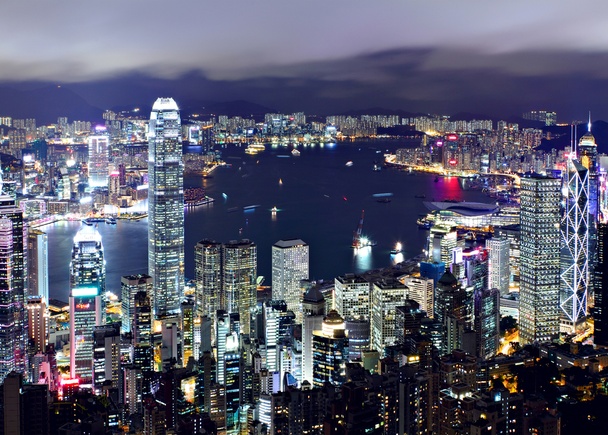One Mega-City, Many Systems: The Evolution of Hong Kong
Bloomberg |
By Parag Khanna and Thomas Sevcik
Ever since the handover of Hong Kong's sovereignty to China in 1997, land reclamation on both the island itself and from Kowloon peninsula have shrunk the breadth of Victoria harbor to a perpetually narrowing strait. This geographical trend turns out to serve as a useful metaphor for the island’s changing politics and economic orientation as China’s control deepens.
Indeed, Hong Kong is quickly becoming the hub of a new version of the "one country, two systems" motto used by the mainland to characterize its relationship with Hong Kong, Macau, and Taiwan. The cluster of cities around (and including) Hong Kong forming the Pearl River Delta – from Shenzhen and Guangzhou in the north to Macao and Zhuhai to the west – are becoming an archipelago of inter-locking hubs with varying policies related to visiting, immigration, business and political freedom. Call it "one mega-city, many systems."
This increasingly integrated urban cluster of almost 100 million souls constitutes China’s mostly densely populated urban corridor. Some experts say it’s actually the biggest city in the world, even if it bears several names. Like an archipelago of islands growing closer rather than farther apart, the Pearl River Delta’s main cities are fusing into a de facto mega city-state that easily would sit in the G20. The Pearl River Delta is China’s wealthiest zone, with an aggregate GDP of over $800 billion, slightly larger than that of the Netherlands.
But far from being unified, the Pearl River Delta region is the foremost model of the future multi-tiered pan-urbanism, a mega-cluster of diversified regulatory districts: physically linked but acting almost like micro-states unto themselves. In a single day, you can cross from Hong Kong, an open society with aggressively free media, to more state-directed but still very global Shenzhen or less-glitzy Dongguan, to the freewheeling and somewhat sleazy gambling haven of Macau, or the tax-free master-planned Zhuhai/Hengqin. Along the way, you will go through checkpoints ranging from full-fledged border crossings requiring visas to light security checks.The journey reveals the different constitutions and political priorities playing out even as the Delta region physically becomes ever more one single city.
What makes the Pearl River Delta unique is its variety of policies and political systems in one city. New projects are carefully located in order to benefit from any combination of different districts. The new Macau University currently under construction, for example, lies on the (mainland) island of Hengqin, which in turn is a new tax-free, special development zone within Zhuhai. That university, however, is connected by a dedicated bridge with Macau, therefore enjoying Macau SAR’s (Special Administrative Region) liberties such as uncensored Internet and rule of law. The massive influx of tourists and visitors – almost 40 million to Hong Kong alone each year, including 25 million from the mainland – hasn’t deterred this fragmentation of legal codes and economic arbitrage.
The process is oddly fitting for China, forming something of a postmodern hukou system transported from the countryside to the future city. In such a scenario, Hong Kong plays the role of the medieval Burg, the central seat of authority and wealth to which access is granted only to the select few. Imagine if the various boroughs of New York City all had different political systems, tax structures, and gambling laws, or if Paris’s many arrondissements each had different degrees of freedom of expression.
As urbanization spreads cities in all directions, they are fusing into mega-clusters of diversified nodes. Witness how dense transportation networks such as high-speed rail have forged a Tokyo-Osaka corridor, the same phenomenon occurring in China with Shanghai-Nanjing and Beijing-Tianjin. Eventually, Abu Dhabi and Dubai will fuse into "Abu Dubai," as will the stretch from San Francisco to Silicon Valley.
For the stable, open city seeking to harness growth, coordination across the mega-cluster could yield an organized effort to cater to the needs of diverse investors and immigrants. Each city-division participates in a broader matrix within which location is allocated according to one’s desires: low tax, high political freedom, freewheeling lifestyle, or other criteria.
We often envision mega-cities as endless urban-scapes of shifting aesthetics and communities, co-existing despite differences, the liberated “city-zen” being a denominator of solidarity. But as the Pearl River Delta reveals, infrastructure can connect but also restrict, and technology can regulate as much as it eases flows. Should the authorities perceive security hazards, even a mega-cluster seemingly unified physically could quickly come to look like the walled dystopia of Hollywood films such as In Time. Or, as an official representative grinned during a recent site visit of Zhuhai’sHengqin Island: "One island – two policies!"
